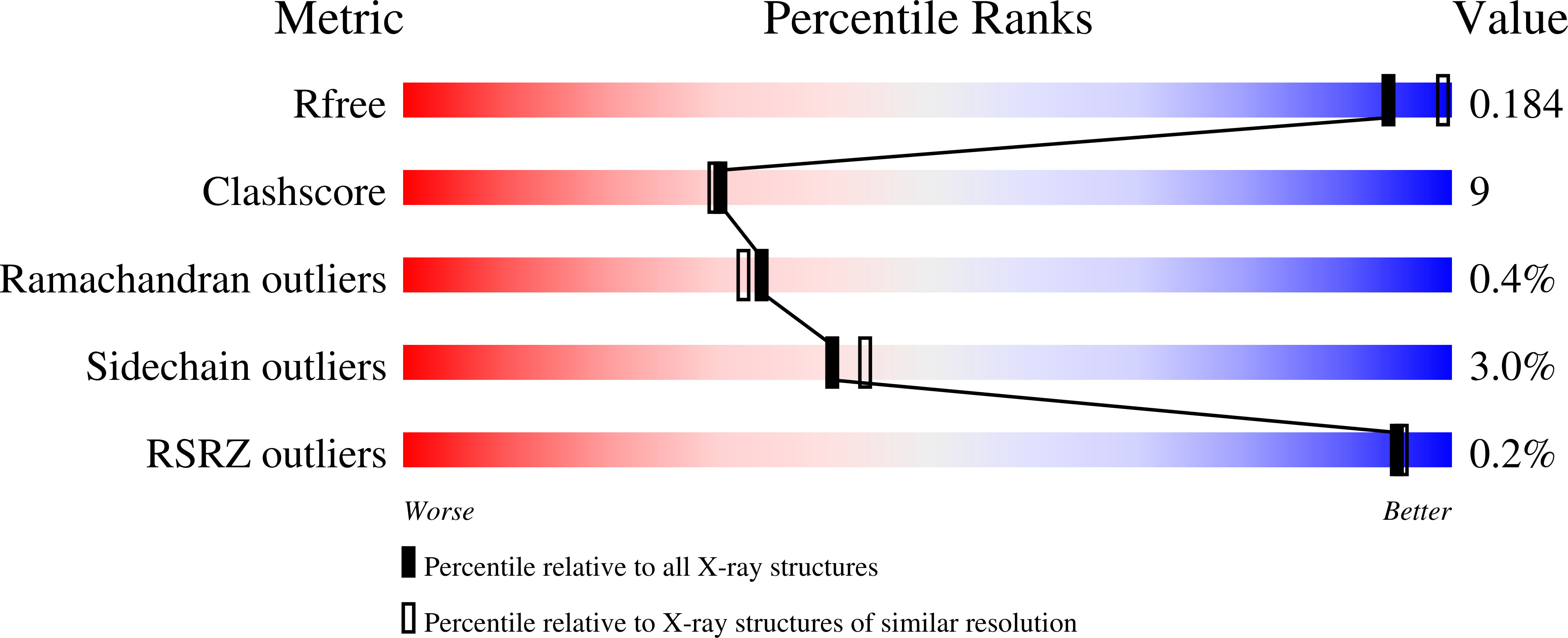Structural and mechanistic insights into the PAPS-independent sulfotransfer catalyzed by bacterial aryl sulfotransferase and the role of the DsbL/Dsbl system in its folding.
Malojcic, G., Owen, R.L., Glockshuber, R.(2014) Biochemistry 53: 1870-1877
- PubMed: 24601529
- DOI: https://doi.org/10.1021/bi401725j
- Primary Citation of Related Structures:
4P04, 4P05, 4P06, 4P07 - PubMed Abstract:
Bacterial aryl sulfotransferases (ASSTs) catalyze sulfotransfer from a phenolic sulfate to a phenol. These enzymes are frequently found in pathogens and upregulated during infection. Their mechanistic understanding is very limited, and their natural substrates are unknown. Here, the crystal structures of Escherichia coli CFT073 ASST trapped in its presulfurylation state with model donor substrates bound in the active site are reported, which reveal the molecular interactions governing substrate recognition. Furthermore, spectroscopic titrations with donor substrates and sulfurylation kinetics of ASST illustrate that this enzyme binds substrates in a 1:1 stoichiometry and that the active sites of the ASST homooligomer act independently. Mass spectrometry and crystallographic experiments of ASST incubated with human urine demonstrate that urine contains a sulfuryl donor substrate. In addition, we examined the capability of the two paralogous dithiol oxidases present in uropathogenic E. coli CFT073, DsbA, and the ASST-specific enzyme DsbL, to introduce the single, conserved disulfide bond into ASST. We show that DsbA and DsbL introduce the disulfide bond into unfolded ASST at similar rates. Hence, a chaperone effect of DsbL, not present in DsbA, appears to be responsible for the dependence of efficient ASST folding on DsbL in vivo. The conservation of paralogous dithiol oxidases with different substrate specificities in certain bacterial strains may therefore be a consequence of the complex folding pathways of their substrate proteins.
Organizational Affiliation:
Institute of Molecular Biology and Biophysics, ETH Zurich , CH-8093 Zurich, Switzerland.
















